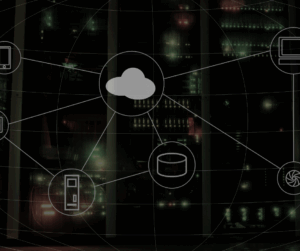In today’s rapidly evolving work landscape, the rise of remote and hybrid work models has brought unprecedented flexibility and opportunities. However, this shift has also introduced new challenges, particularly in the realm of security and trust. Digital identity and verification are now critical components for organizations seeking to maintain a secure remote work environment and manage their increasingly distributed workforce. This article delves into the importance of robust digital identity verification strategies for remote workers, exploring the basics, the challenges, and the future of secure remote collaboration.
Understanding Digital Identity

What is Digital Identity?
Digital identity refers to the unique set of data that represents an individual or entity online. It encompasses a wide array of attributes, including usernames, passwords, email addresses, and biometric data, which collectively serve to verify the identities of users accessing digital resources. In essence, digital identity is how we verify the identities of people in the online world. It is the cornerstone of secure digital interactions and serves as the foundation for granting access to systems, applications, and sensitive information. Effectively managing digital identity is critical for maintaining cybersecurity and preventing unauthorized access to company assets, especially with the rise of remote work.
The Importance of Digital Identity in Remote Work
The importance of digital identity verification cannot be overstated in today’s remote and hybrid work environments. As businesses increasingly rely on remote workers, the need to securely verify identities becomes paramount. Without robust digital identity verification solutions, organizations are vulnerable to identity fraud, identity theft, and cybersecurity breaches. The traditional methods of in-person verification are no longer viable, making advanced identity verification a necessity. A comprehensive identity and access management system is essential to safeguard sensitive data, ensure regulatory compliance, and maintain trust in the remote workforce. By implementing effective remote identity verification, companies can mitigate risks and foster a secure remote work environment.
Evolution of Digital Identity Solutions
Digital identity solutions have evolved significantly over the years, driven by technological advancements and the increasing sophistication of cyber threats. Initially, passwords were the primary means of authentication, but their vulnerability to phishing and brute-force attacks led to the development of multi-factor authentication (MFA). Biometrics, such as facial recognition and fingerprint scanning, have emerged as more secure alternatives. Modern identity verification solutions leverage artificial intelligence (AI) and machine learning (ML) to enhance identity proofing and detect fraudulent activities. The future of remote work hinges on continued innovation in digital identity management to address the unique challenges of remote onboarding and maintaining secure remote access.
Identity Verification in a Remote Work Environment

What is Identity Verification?
Identity verification is the process of confirming that an individual is who they claim to be. In the context of a remote work environment, this becomes especially critical. What is done to establish/confirm digital identity It involves using various verification methods and verification solutions to ensure that remote workers are indeed the people they represent themselves to be. The identity verification process often includes comparing information provided by the individual against trusted data sources, such as government-issued identity documents or biometric data. This is vital to prevent identity fraud, identity theft, and unauthorized access to sensitive information. Strong identity verification is a cornerstone of cybersecurity and helps to safeguard a secure remote work environment. By effectively verifying the identities of remote employees, organizations can mitigate risks and maintain the integrity of their operations. The importance of remote identity verification grows as remote work continues to expand.
Methods of Remote Identity Verification
Organizations seeking to bolster their cybersecurity have access to several remote identity verification methods. A few common approaches include:
- Digital identity verification tools that scan and authenticate identity documents such as passports and driver’s licenses.
- Biometric authentication, including facial recognition and fingerprint scanning, providing an additional layer of security.
Multi-factor authentication (MFA) is another widely adopted method, requiring remote workers to provide multiple forms of authentication, such as a password and a one-time code sent to their mobile device. Knowledge-based authentication, which involves answering questions only the legitimate user would know, can also be employed. Advanced identity verification can be achieved through AI-driven systems that analyze behavior patterns and detect anomalies, providing a more robust safeguard against identity theft and identity fraud.
Best Practices for Identity Verification Solutions

Implementing best practices for identity verification solutions is crucial for creating a secure remote and hybrid work environment. Prioritizing the importance of remote identity verification is the best step in protecting systems and information. This includes several key actions:
- Organizations should adopt a multi-layered approach to authentication, combining multiple verification methods to enhance security.
- Regular security audits and vulnerability assessments should be conducted to identify and address potential weaknesses in the verification system.
- Employee training on cybersecurity awareness and phishing prevention is essential to minimize the risk of social engineering attacks.
It is also important to ensure compliance with relevant data privacy regulations, such as GDPR and CCPA, when collecting and processing biometric data. Furthermore, organizations should continuously monitor and update their identity verification processes to adapt to evolving threats and technological advancements.
Security and Cybersecurity Measures

Safeguarding Digital Identities
In the realm of cybersecurity, safeguarding digital identities is paramount, especially for organizations with a significant number of remote workers. A comprehensive digital identity management strategy must include robust authentication protocols to prevent unauthorized access and mitigate the risk of identity theft. This involves employing multi-factor authentication (MFA) and regularly updating passwords to ensure they are strong and resistant to cracking. The implementation of advanced identity verification solutions, such as biometric authentication methods like facial recognition and fingerprint scanning, can significantly enhance the security posture of the remote workforce. Furthermore, continuously monitoring and auditing the verification system is crucial to identify and address any vulnerabilities. Prioritizing the importance of remote identity verification is the key for any business in the world of remote and hybrid work.
Role of Biometrics in Identity Verification
Biometrics play a pivotal role in modern identity verification, offering a more secure and reliable method of authentication compared to traditional passwords. Biometric data, such as fingerprints, facial recognition, and iris scans, are unique to each individual, making them difficult to counterfeit or steal. Integrating biometrics into the remote onboarding process can significantly enhance identity proofing, ensuring that remote employees are who they claim to be. The use of biometric authentication also streamlines the verification process, providing a seamless and efficient user experience. However, it is essential to address privacy concerns associated with the collection and storage of biometric data, ensuring compliance with relevant data privacy regulations. Biometrics are essential in protecting systems and information by offering more secure methods to verify the identities of remote employees.
Addressing Identity Theft Risks
Identity theft poses a significant threat to organizations with remote workforces, potentially leading to financial losses, reputational damage, and legal liabilities. To address these risks, it is crucial to implement robust identity verification solutions that can detect and prevent fraudulent activities. This includes employing advanced identity verification techniques such as analyzing behavior patterns, monitoring login attempts, and verifying government-issued identity documents. Regular cybersecurity awareness training for remote workers is essential to educate them about phishing scams and other social engineering tactics used by identity thieves. Additionally, organizations should establish clear incident response plans to address identity theft incidents promptly and effectively. By proactively addressing identity theft risks, organizations can safeguard their assets and maintain the trust of their customers and employees, which emphasizes the importance of remote identity verification.
The Future of Remote Work and Digital Identity

Trends in Digital Identity Verification
The future of remote work is inextricably linked to advancements in digital identity verification. Several key trends are shaping this landscape, primarily focusing on enhanced security and user experience. One significant trend is the increased adoption of biometric authentication methods, such as facial recognition and fingerprint scanning, offering a more secure alternative to traditional passwords. Artificial intelligence (AI) and machine learning (ML) are being integrated into identity verification solutions to detect and prevent identity fraud more effectively. These technologies analyze behavior patterns and identify anomalies that could indicate unauthorized access. The integration of blockchain technology for secure and transparent management of digital identities is also gaining traction. As remote work continues to evolve, the trends in digital identity verification are all evolving to be more secure for remote employees in remote work environments.
Impact of Technology on Remote Workforce Security
Technology is revolutionizing remote workforce security, significantly enhancing the ability to verify identities and safeguard sensitive data. Advanced identity verification solutions, such as those employing biometrics and AI, are becoming increasingly prevalent in protecting remote work environments. Multi-factor authentication (MFA) adds an additional layer of security, requiring remote workers to provide multiple forms of authentication before gaining access to systems and applications. Cloud-based identity and access management platforms offer centralized control and visibility over remote access, making it easier to monitor and manage the digital identities of remote employees. These technological advancements enable organizations to mitigate the risks associated with remote onboarding and maintain a secure remote and hybrid work environment. The importance of remote identity verification grows with technology.
Preparing for the Future of Digital Identity
To prepare for the future of digital identity in the context of remote work, organizations must adopt a proactive and forward-thinking approach. This involves investing in robust identity verification solutions that leverage the latest technologies, such as biometrics, AI, and blockchain. It is crucial to develop comprehensive digital identity management strategies that encompass all aspects of the employee lifecycle, from remote onboarding to offboarding. Organizations should also prioritize employee training on cybersecurity awareness and best practices for safeguarding digital identities. Furthermore, it is essential to stay informed about emerging threats and regulatory changes related to data privacy and identity verification. By taking these steps, organizations can effectively address identity theft risks, maintain compliance, and foster a secure and productive remote workforce. The remote verification process needs to adapt to best safeguard against identity theft.
Conclusion
As remote and hybrid work continue to redefine the modern workplace, digital identity and verification have become the foundation of secure collaboration. Organizations can no longer rely on legacy access methods or manual verification processes—identity must now be continuous, intelligent, and adaptive. By embracing technologies like biometrics, AI-driven verification, and multi-factor authentication, businesses can protect their remote workforce, ensure compliance, and maintain trust across distributed environments.
At UberEther, we help enterprises strengthen digital identity foundations with secure, scalable, and compliant identity solutions designed for the realities of modern work. Get in touch with us to learn more about UberEther’s IAM solutions today and build a remote workforce you can trust.
